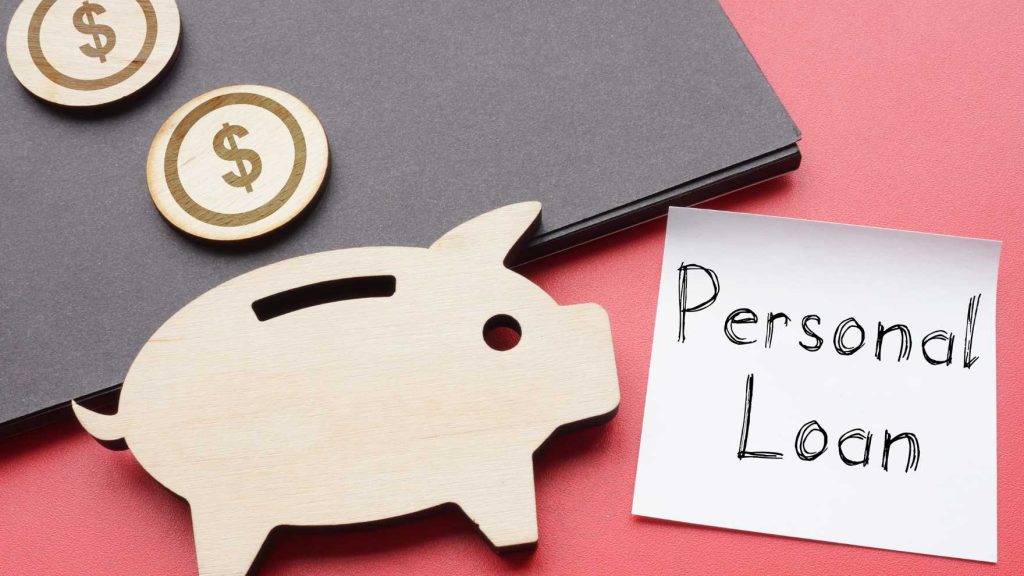Personal Loan Refinancing 2025 : A Comprehensive Guide to Lower EMIs
Personal Loan Refinancing : In today’s fast-paced financial world, personal loans have become one of the most popular tools for individuals to manage emergencies, consolidate debt, or fulfill personal aspirations. While these loans provide quick access to funds without collateral, the repayment burden often takes a toll on borrowers, especially when interest rates are high or monthly EMIs become difficult to manage. This is where personal loan refinancing steps in as a game-changer.
Table of Contents
Refinancing essentially means replacing your existing personal loan with a new one that offers better terms such as lower interest rates, longer repayment tenure, or more manageable EMIs. For those struggling with hefty monthly installments, refinancing can be a smart financial strategy to reduce pressure and bring stability to personal finances.
In this comprehensive guide, we will dive deep into the concept of refinancing, understand how it works, explore its advantages and disadvantages, and outline strategies to make the most of it so you can truly lower your EMIs and improve your financial well-being.
What is Personal Loan Refinancing?

Personal loan refinancing, also known as loan balance transfer, refers to the process of transferring an existing loan from your current lender to another financial institution that offers better repayment terms. The primary motivation for borrowers is usually to reduce interest rates and thus lower their Equated Monthly Installments (EMIs). However, refinancing also opens up opportunities for restructuring the loan, extending the repayment tenure, consolidating multiple debts, or even availing additional top-up funds if required.
In simple words, if you feel that your personal loan is eating up too much of your monthly budget, refinancing helps you negotiate better terms with another lender so that your repayment becomes smoother and more affordable.
Why Do People Choose to Refinance Personal Loans?
Borrowers opt for refinancing for a variety of reasons. The most common ones include:
- High interest rates on the current loan – If you had taken a personal loan when interest rates were higher, refinancing at a lower rate can save a significant amount over time.
- Lower EMIs – By refinancing to a longer repayment tenure or better rate, your monthly installments can reduce, easing financial stress.
- Improved credit score – If your credit score has improved since taking the original loan, you may qualify for more favorable terms.
- Debt consolidation – Multiple high-interest loans can be combined into a single refinanced loan with one EMI.
- Top-up loan option – Refinancing allows access to additional funds alongside the transfer.
Also Read : How to Use Your Personal Loan Responsibly – A Comprehensive Guide 2025
How Does Personal Loan Refinancing Work?
The process of refinancing is fairly straightforward but requires careful planning:
- Research and Compare Offers – Look for lenders offering lower interest rates, minimal processing fees, and favorable terms.
- Check Eligibility – Ensure your credit score, income, and repayment history align with the new lender’s requirements.
- Apply for Balance Transfer – Submit necessary documents like identity proof, income proof, and loan statements.
- Loan Closure with Current Lender – The new lender pays off the outstanding loan balance directly to your existing lender.
- Start Repayment with New Lender – You begin paying EMIs as per the new loan terms, ideally lower and more manageable.
Key Benefits of Refinancing Personal Loans

Refinancing is often considered a smart move because of the wide range of benefits it brings:
1. Lower Interest Rates
The biggest advantage is a reduction in the interest rate. Even a 1–2% drop can save thousands over the tenure of the loan.
2. Reduced EMI Burden
With either a lower interest rate or an extended repayment tenure, the monthly EMI amount comes down, giving borrowers more breathing space.
3. Debt Consolidation
Multiple loans with different EMIs can be consolidated into one refinanced personal loan, simplifying repayment.
4. Flexible Tenure Options
Borrowers can choose a longer repayment term to ease EMIs or a shorter term to finish the loan faster.
5. Improved Financial Health
Managing lower EMIs frees up income, reduces stress, and helps borrowers plan better for other financial goals.
6. Access to Additional Funds
Some lenders allow a top-up loan during refinancing, giving borrowers extra liquidity for urgent needs.
Things to Consider Before Refinancing
While refinancing offers many advantages, it is not always the right choice for everyone. You must evaluate these factors before making a decision:
- Processing Fees and Charges – Refinancing involves new processing fees, documentation charges, and sometimes prepayment penalties from the existing lender.
- Remaining Tenure – If your loan is already near completion, refinancing may not yield significant savings.
- Credit Score Impact – While a good score helps you qualify, frequent refinancing applications can sometimes impact your score.
- Total Cost vs. Savings – Always calculate the total cost of refinancing and compare it with potential savings to ensure it’s worth it.
- Hidden Charges – Check for insurance costs, service fees, and other hidden charges.
Personal Loan Refinancing vs. Personal Loan Restructuring
Many borrowers confuse refinancing with restructuring. Here’s the difference:
- Refinancing: You switch to a new lender with better terms.
- Restructuring: You negotiate with your existing lender to modify repayment terms due to financial difficulty.
Both aim to make repayment easier but function differently.
Who Should Consider Refinancing?
Refinancing works best for:
- Borrowers paying high interest rates compared to current market rates.
- Those with stable income and a good credit score (700+).
- Borrowers with a long repayment tenure left, allowing room for savings.
- Individuals looking to consolidate multiple debts into a single EMI.
Steps to Successfully Refinance Your Personal Loan

To maximize the benefits, here’s a step-by-step approach:
Step 1: Analyze Your Current Loan
Check your outstanding balance, interest rate, EMI burden, and remaining tenure.
Step 2: Check Your Credit Report
A higher score improves chances of securing better terms. If your score has improved, you are in a stronger position.
Step 3: Compare Multiple Lenders
Do not rush. Compare at least 3–4 lenders for interest rates, tenure options, and charges.
Step 4: Calculate the Total Savings
Use a loan refinancing calculator to compare current EMIs vs. refinanced EMIs and assess potential savings.
Step 5: Negotiate with New Lender
Sometimes lenders can further lower rates if you negotiate well, especially if you have a good repayment track record.
Step 6: Proceed with Balance Transfer
Complete documentation, get the new loan approved, and ensure the old one is fully closed.
Step 7: Manage New Loan Wisely
Avoid missing EMIs on the new loan and take advantage of reduced financial pressure to build savings.
Buy Now : Accounting & Billing Website
Risks and Drawbacks of Personal Loan Refinancing
Though refinancing looks attractive, it has a few downsides:
- High processing and transfer fees may reduce savings.
- Longer tenure means lower EMIs but higher overall interest outgo.
- Multiple inquiries during refinancing can temporarily affect credit score.
- Commitment to new loan terms may create issues if your financial situation changes.
Practical Example of Loan Refinancing
Imagine you have a personal loan of ₹5,00,000 at 15% interest for 5 years. Your EMI is around ₹11,895.
If you refinance at 11% for the remaining 4 years, your EMI drops to around ₹12,937 or your savings could be substantial depending on tenure extension. Over time, this can save you tens of thousands.
Points to Remember When Refinancing
- Always read terms and conditions carefully.
- Ensure that savings outweigh the costs.
- Avoid refinancing multiple times.
- Choose reputable lenders with transparent processes.
- Consider your future financial goals before extending tenure.
Future of Personal Loan Refinancing in India
With the rise of fintech platforms, digital banking, and competitive interest rates, refinancing is becoming increasingly accessible. More lenders now offer instant loan balance transfer options with minimal paperwork, allowing borrowers to shift to better deals quickly. This trend is expected to grow in 2025 and beyond as customers become more financially aware.
Conclusion

Personal loan refinancing is a powerful tool for borrowers aiming to reduce their EMI burden and manage finances more efficiently. It allows you to capitalize on lower interest rates, consolidate debt, and restructure repayments in a way that suits your lifestyle. However, like any financial decision, it requires careful analysis of costs, benefits, and long-term impact. If done wisely, refinancing can save significant money, lower financial stress, and help you regain control over your finances.
Buy Now : Beginner to Advanced Option Trading Strategy
The key is to evaluate your current loan, compare offers, calculate savings, and then make an informed decision. For individuals struggling with high EMIs, refinancing could be the stepping stone to greater financial freedom.
Disclaimer
This article is for educational purposes only and should not be taken as financial advice. Loan refinancing decisions depend on individual financial circumstances. Please consult with your lender or financial advisor before making any borrowing decisions.



